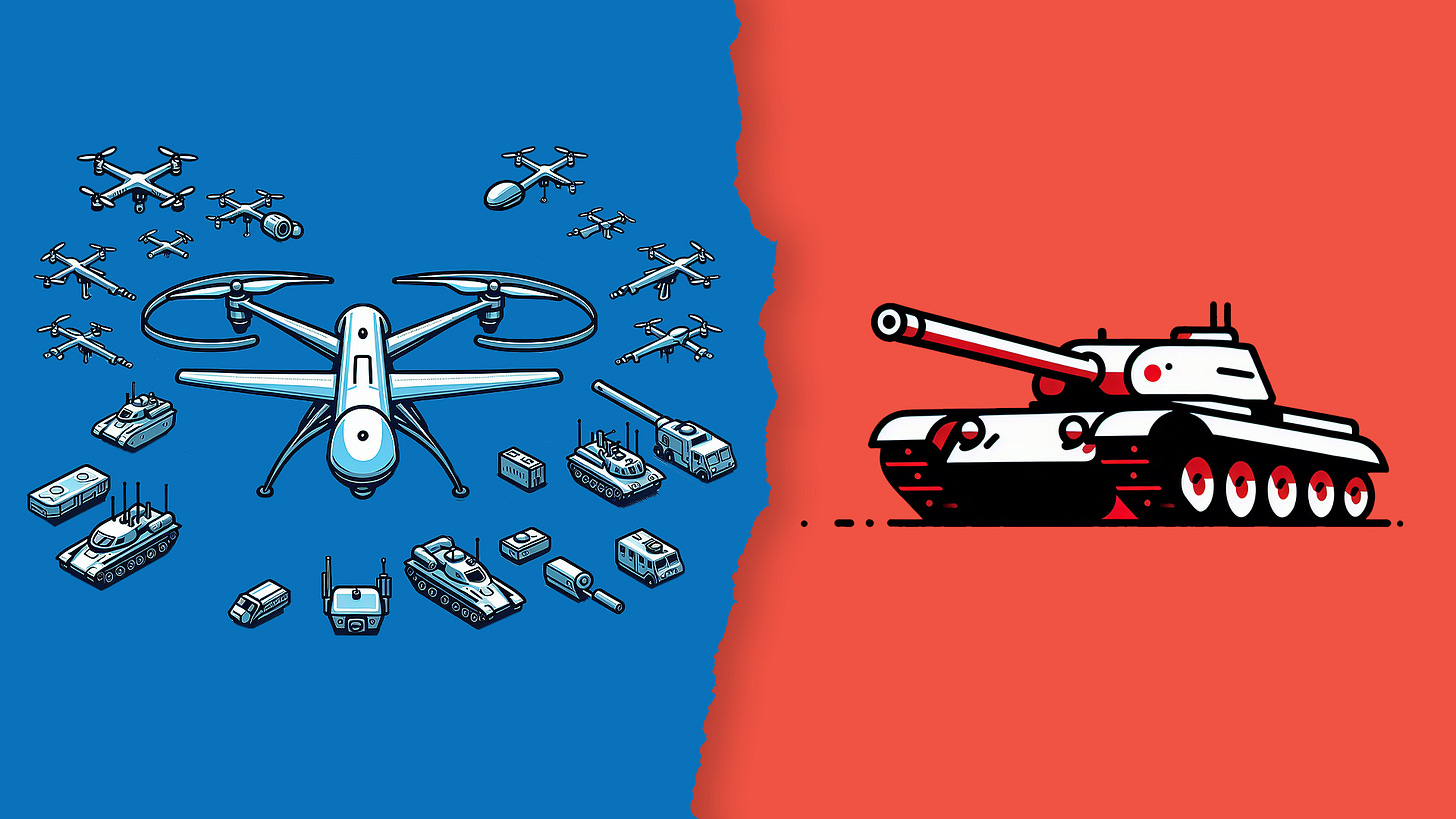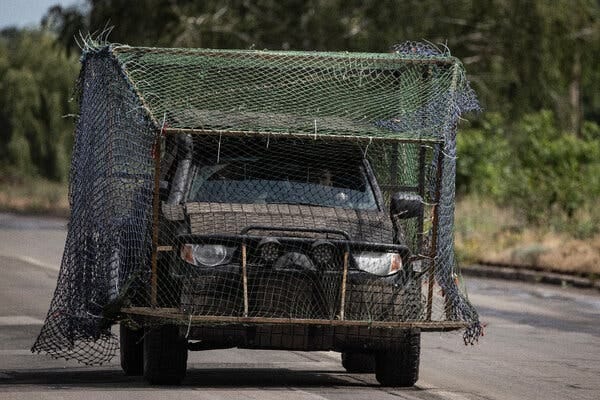The Bankers are Coming
Don't tell anyone, but Canadian banks have discovered the Canadian defence sector
🎯 Three-Shot Burst
Guns N' Roses
Don't tell anyone, but Canadian banks have discovered the Canadian defence sector.
And not just in hushed tones for KYC and risk analysis. On a recent call, someone referred to the defence sector's treatment in banking as "lumped in with that of oil, tobacco and pornography."
Last week, several readers wrote in to tell us they had been refused banking services in Canada.
No longer.
What they’re saying:
"What does greater defence spending mean for the economy?" asks RBC in a thought leadership piece. The analysis includes a primer on the obscure but essential Industrial and Technological Benefits (ITB) policy.
TD recently issued a feature in its weekly report titled "Government Plays Defense as U.S. Tariffs Hit Economy," forgetting that since we are not the 51st state, we spell defence with a "c".
"The explosive math behind Canada's defence spending surge" with a ten-year view on spending, from Scotiabank. The author concludes by referring to defence spending as a ransom payment to our U.S. neighbours.
"Guns and Bonds" declares BMO, citing the sudden shift in spending priorities. The discussion around debt and bond rates is an interesting example of second-order thinking.
Finally, CIBC published a piece that acknowledges the economic multiplier effect of defence spending.
Bottom line: Canadian banks have finally woken up to defence: what was once a taboo sector is now a strategic priority, with billions in spending, shifting economic tides, and a new seat at the financial table. Defence is no longer a dirty word in Canadian finance, it's the next big growth story.
Related:
EU to conclude deals to give Canada access to defence loans — a direct pipeline to capital for Canadian firms seeking to scale up manufacturing, R&D, and exports into Europe’s rearming market
Directed lending became standard in development finance for a reason. A multilateral defence bank will need to adopt the same approach to engaging with, and working through, commercial banks
📋 Procurement Update
“You’re Doing it Wrong!”
Germany is understood to be considering purchasing up to 2,500 armored fighting vehicles and as many as 1,000 battle tanks as part of a joint European effort to create new NATO brigades to deter Russia.
Inertia is the enemy: Decisions like this are a byproduct of armed forces that have been starved for years of their wish lists of traditional hardware. Instead of conducting a ground-up assessment of actual threats and required capabilities, there is a default motion to procure what is best-known.
Bottom line: If Canada wants to become a net contributor to NATO, it’s time to break the cycle of buying yesterday’s hardware for yesterday’s wars. Smart procurement means starting with a ruthless assessment of today’s threats—then building the force we actually need, not just the one we’re used to.
Related:
To fix Canada’s economy, we must fix the government procurement mess
💾 Canada’s first Defence Tech Hackathon
September 20 in Toronto
The Icebreaker, in partnership with Build Canada and NordSpace, is excited to host Canada’s first defence tech hackathon.
The Defence Tech Hackathon is a catalyst to jumpstart a world-class ecosystem that builds sovereign capability in Canada. Our goal is to attract top talent, rapidly prototype real-world solutions, and bridge the gap between innovators and military end-users.
By forging new startups, building critical networks, and injecting a sense of urgency into defence innovation, this hackathon lays the foundation for Canada to compete and win on the global stage. We aim to advance the grassroots spirit of current and soon-to-be defence tech entrepreneurs.
We are still finalizing details, but here is what we know so far:
We will aim to rapidly prototype dual-use tech that solves real operational gaps for the Canadian Armed Forces
We are considering a challenge for a prototype platform that ingests multi-modal sensor feeds (satellite, UAV, radar, acoustic, etc.) and fuses them for real-time Arctic domain awareness
If you’re a software engineer who is defence-curious, this could be for you. We are looking for folks with domain expertise/experience in one or more of: defence, dual use tech (software and technology that can be used for both civilian and military applications), or Arctic operations; or who have any prior experience with multi-modal sensor fusion and real-time data platforms
💬 Quote of the Day
NATO chief on Russia’s foreign minister:
“I know Sergey Lavrov very well. He has been foreign minister of Russia since the birth of Jesus Christ, and I’ve never taken him seriously. When you talk about fake news, listen to Sergey Lavrov.”
Full interview here.
⚔️ Combat Readiness
Asymmetric Warfare
The future of conflict is scalable asymmetric deterrence.
Modern deterrence requires scalable, low-cost, and “low-effect” systems deployed in large numbers, which collectively generate persistent pressure and unpredictability, as demonstrated by Ukraine’s drone campaigns.
Think: a swarm of low-cost assets working in concert with high-end platforms.
How it works: A striking recent illustration of this concept is Ukraine’s Operation Spiderweb, a coordinated UAV campaign that penetrated deep into Russian territory and destroyed long range bomber aircraft. More than 100 low-cost FPV drones, launched covertly from inside Russian territory, successfully struck five separate air bases and destroyed or disabled over 40 aircraft, including strategic bombers like the Tu-95MS and Tu-22M3.
These attacks succeeded not through platform survivability or kinetic force alone, but by generating friction and confusion through scale, timing, and unpredictability. The drones themselves were unlikely to succeed individually, but in concert, they highlighted vulnerabilities in Russia’s centralized defence infrastructure.
Success hinged on robust, innovative manufacturing, cross-platform compatibility, and designing for attrition—accepting that not every system must succeed individually, as aggregate impact is what matters.
What has changed: In the US, high-end and centralized defence systems have largely been developed through prime contractors. But the scalable, lower-cost systems that underpin asymmetric deterrence represent a market that non-traditional companies are just beginning to address.
Logistics, autonomy, and command-and-control architectures must be reimagined to enable rapid deployment, coordination, and resilience across thousands of units, often under contested or denied conditions.
Startups, not traditional defence primes, are best positioned to drive this shift by building modular, interoperable, and rapidly manufacturable subsystems, and by advancing autonomy and mission agility.
Bottom line: Large primes will continue to develop high-end, integrated systems. But as Canada attempts to rebuild our defence industrial base, we must focus on leapfrog capabilities. The scale, adaptability, and velocity demanded by asymmetric deterrence will increasingly depend on a different kind of industrial base — one led by startups that can deliver behaviours that adapt in real time to shifting threats.
Counterpoint:
The reason militaries love to buy legacy systems from established defence primes is because they are pre-packaged… Defence companies need to 'quit trying to sell us pieces of the puzzle' and work together, says top US general [Eds. note: a good reason why PE-style consolidation of defence will grow in popularity]
Related:
In a groundbreaking test which has been defined as “a major leap in human-machine teaming,” the U.S. Air Force recently demonstrated the ability to have multiple autonomous collaborative platforms (ACPs) flying alongside crewed fighter aircraft
Ukraine turns to fishing nets to catch Russian drones
What we can learn from Ukraine’s drone revolution
The utility model of war: Rethinking how we buy defence
Ex-fighter pilot wants to change how we arm the military: Canada is 'trapped outside the technology cycle'
Recorded live at the American Dynamism Summit in DC: Alex Miller, CTO for the Chief of Staff of the Army, and Justin Fanelli, CTO at the Department of the Navy, break down how the Department of Defense is shifting from decades-old processes to software-speed execution, why the real bottlenecks are cultural, not technical, and how startups can actually navigate and scale within this massive system:
🍁 Canada’s Inaugural Defence Power 50 List
The Icebreaker is excited to announce the opening of nominations for Canada’s inaugural Defence Power 50 List. The list will recognize the most influential leaders and up-and-comers in the defence community who are critical to making the changes Canada needs.
The selection of this inaugural 2025 list is co-chaired by Erin O'Toole, Glenn Cowan, Philippe Lagassé, Sheldon McCormick, and Eliot Pence.
Bottom Line: Nominate someone we should know about today!
🔫 Hot Shots
Kola Bay: As melting sea ice reveals new trade routes, resources and battlegrounds, Kola Bay is emerging as one of Russia’s most powerful hubs in its quest to dominate the Arctic… Foreign Affairs on how America risks losing the Arctic ‘great game’
Tax and spend: The bill for Canada’s laggard defence spending has come due. Canada should consider hiking GST, other taxes to pay for defence-spending boost: analysts
Mo money, mo problems: Canada's top soldier extols benefits of spending boost
Operation Reassurance: This week, HMCS Edmonton and Yellowknife sailed from Halifax to join Standing NATO Mine Countermeasures Group One (SNMCMG1) as part of Operation REASSURANCE in Europe. The Kingston-class vessels will bolster NATO’s ability to keep Baltic and North Sea shipping lanes clear of mines, a mission that’s only grown in urgency since Russia’s escalation in Ukraine
Grounded: US Army has blocked the Air Force generative AI chatbot, NIPRGPT, from its networks, citing cybersecurity and data governance and highlighting the challenges the U.S. military faces in assessing risk when adopting cutting-edge technologies like AI
Front lines: The Government of Ukraine, already a global leader in digital transformation before the war, will allow front line soldiers to manage orders for their own weapons
Comparative advantage: The future is quantum. Canada must seize and industrialize it
Back to the future?: Rethinking Canada’s foreign policy architecture for great power competition
Womp womp: A report from a think tank on venture capital and Canadian defence [Eds. note: The recommendations reflect a lack of practical insight into venture capital and startup incentives]
🤝 Meet the Defence Tech Community
The Icebreaker is hosting another meetup, this time on the West Coast
Defence Tech Patio Drop In, August 14 in Victoria, B.C.: Sign up here to join VCs, founders, operators, defence primes, and the defence-curious, over a few cold beers on a sunny patio.
If you’ve got battlefield intel, classified tips, or just want to call in an airstrike on our typos, hit “reply” and sound off. Whether it’s a new tech sighting, a rumour from the mess hall, or feedback on our comms, we want your SITREP.








